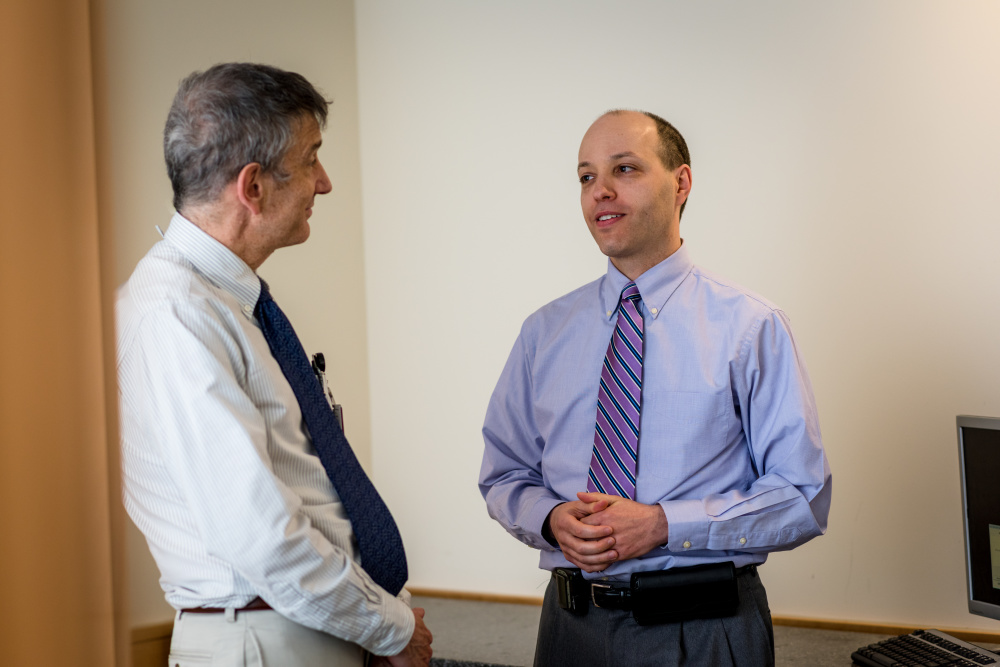
For many cancer patients, treatment comes with its own unique challenges — a common one being the management of pain through medication and other therapies. So when do cancer clinicians treat pain with opioid medication? And more importantly, how do they optimize the drug’s ability to increase a patient’s quality of life while also minimizing the risks of addiction?
Clinicians may prescribe opioid pain medication for moderate to severe pain caused by a host of different reasons – for example, because of a tumor pressing on bone, nerves, or organs, or because of side effects due to chemotherapy, radiation or surgery. Douglas E. Brandoff, MD, Director of Opioid Safety and Compliance at Dana-Farber, says it is important to find a balance when developing a medication plan for patients because pain management carries some risk of addiction.
“On the one hand, we want to ensure that there is access to opioid medications when it is clinically appropriate and necessary for treating cancer-related pain,” says Brandoff, who consults policymakers on prescription opioids and abuse deterrent substitutions to opioids as a gubernatorial appointee to the Massachusetts Opioid Drug Formulary Commission. “At the same time, we need to be thoughtful about how much we prescribe, and when appropriate, to try non-opioid pain medications first without automatically turning to opioid therapy.”
Learn More:
Brandoff is one of a team of palliative care clinicians at Dana-Farber’s Department of Psychosocial Oncology and Palliative Care, which specializes in treating patients for pain management. Brandoff and other palliative care clinicians work together with oncologists to decide which pain relief options are best for a patient’s needs. Together, they assess a patient’s medical history and their treatment for the disease, and they work closely with palliative pharmacists to prevent the occurrence of adverse side effects from medication.
Clinicians can also educate patients about their personal addiction risk profile by screening for substance misuse. Whether there is a low, medium or high level of risk, the clinician can then work closely with a patient and family members to address and lessen those risks as much as possible. It is also important to review safety information with patients, including how to take medication as prescribed, not sharing with others, and how to safely dispose of unused medication, Brandoff says.
For some patients, opioid pain medication is unnecessary, and non-opioid pain management can be an effective option. Non-opioid pain management includes therapies such as palliative radiation, interventional pain management with nerve block or epidural-based steroid injections, and neuropathic pain medications. Some patients also report that integrative therapies such as massage therapy and acupuncture have helped them manage pain.
Regardless, patients and clinicians should consider a “mosaic” of therapeutic options, Brandoff says.
“It is important to call upon non-opioid therapies to the fullest extent possible, to safely prescribe opioids when clinically appropriate, to advocate for preserved access to opioids for cancer pain management, and to identify opportunities to taper medication doses when clinically feasible,” he says.
